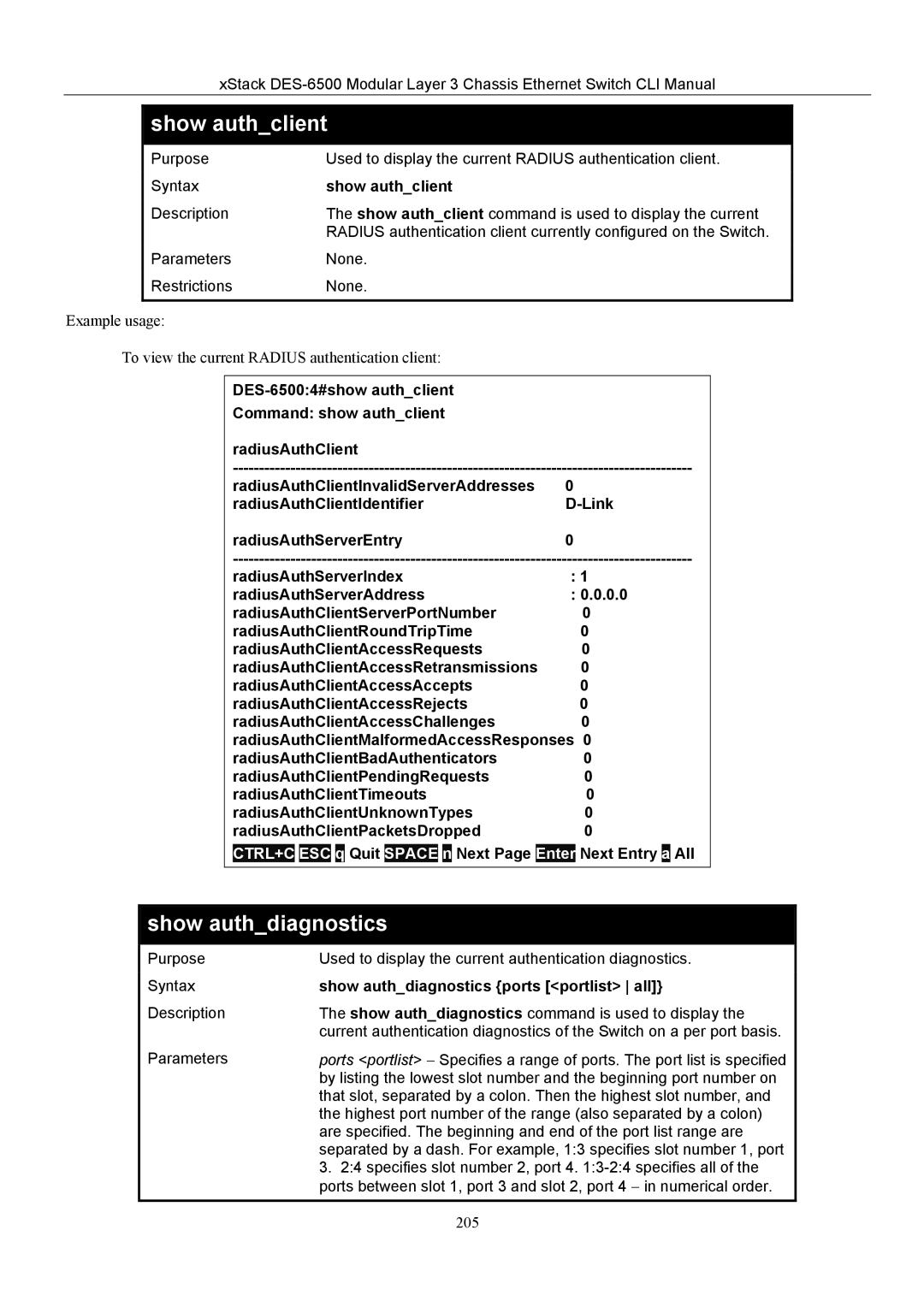
xStack
show auth_client
Purpose | Used to display the current RADIUS authentication client. |
Syntax | show auth_client |
Description | The show auth_client command is used to display the current |
| RADIUS authentication client currently configured on the Switch. |
Parameters | None. |
Restrictions | None. |
|
|
Example usage:
To view the current RADIUS authentication client:
|
| |
| Command: show auth_client |
|
| radiusAuthClient |
|
| ||
| radiusAuthClientInvalidServerAddresses | 0 |
| radiusAuthClientIdentifier | |
| radiusAuthServerEntry | 0 |
| ||
| radiusAuthServerIndex | : 1 |
| radiusAuthServerAddress | : 0.0.0.0 |
| radiusAuthClientServerPortNumber | 0 |
| radiusAuthClientRoundTripTime | 0 |
| radiusAuthClientAccessRequests | 0 |
| radiusAuthClientAccessRetransmissions | 0 |
| radiusAuthClientAccessAccepts | 0 |
| radiusAuthClientAccessRejects | 0 |
| radiusAuthClientAccessChallenges | 0 |
| radiusAuthClientMalformedAccessResponses 0 | |
| radiusAuthClientBadAuthenticators | 0 |
| radiusAuthClientPendingRequests | 0 |
| radiusAuthClientTimeouts | 0 |
| radiusAuthClientUnknownTypes | 0 |
| radiusAuthClientPacketsDropped | 0 |
| CTRL+C ESC Quit SPACE Next Page Enter Next Entry All | |
show auth_diagnostics |
| |
Purpose | Used to display the current authentication diagnostics. | |
Syntax | show auth_diagnostics {ports [<portlist> all]} | |
Description | The show auth_diagnostics command is used to display the | |
| current authentication diagnostics of the Switch on a per port basis. | |
Parameters | ports <portlist> − Specifies a range of ports. The port list is specified | |
| by listing the lowest slot number and the beginning port number on | |
| that slot, separated by a colon. Then the highest slot number, and | |
| the highest port number of the range (also separated by a colon) | |
| are specified. The beginning and end of the port list range are | |
| separated by a dash. For example, 1:3 specifies slot number 1, port | |
| 3. 2:4 specifies slot number 2, port 4. | |
| ports between slot 1, port 3 and slot 2, port 4 − in numerical order. | |
205
